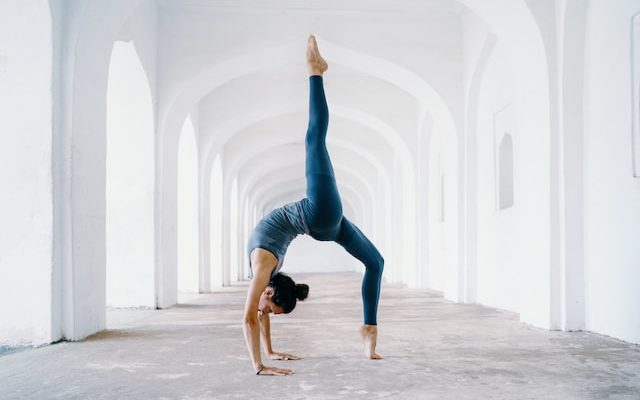People who live an active lifestyle can choose between two distinct categories of clothing: activewear and sportswear. When we talk about “activewear,” we mean clothing that can be worn as a transitional piece between working out and hanging out with friends.
Activewear
Wearables that combine style and function with environmentally friendly materials are known as activewear. Clothing like parkas, hoodies, and crew neck fleece sweaters are ideal for exercising and then changing into casual apparel where the styles, textures, and cut of the clothes match people in a relaxed atmosphere. Most active people like to dress in sportswear, which keeps them both useful and fashionable as they spend a lot of time outdoors. Accessories and footwear come in a wide variety as part of activewear.
Is There a Type of Activewear Clothing?
Even if activewear was originally developed for sports and exercise purposes, you could now get almost any type of clothes labeled as activewear. A ball gown made of moisture-wicking or breathability textiles is unlikely, but you can find dresses suitable for a hike, a game of tennis, or brunch with friends. Additionally, there are trendy sneakers that resemble platform sandals more than running shoes in the category of fitness footwear, which includes anything from running shoes to hiking boots. All kinds of clothing can be made into sportswear, but the most popular components for women’s activewear are:
- Cropped tees
- Dresses
- Shorts for cycling.
- Lingerie and intimate apparel
- Jumpsuits
- Swimsuits and swimwear
- Socks
- Accessories such as hats and gloves
- Shorts for exercise
- Pants
- High-waist, Capri, and crop leggings are all available.
- Racerback sports bras with a lace-up design.
- Hoodies
- Sweatshirts
- Pullovers
- Short and long-sleeved shirts for both men and women
- Graphic t-shirts
- Wearing a tank top is a great way to show
- Rompers
- Skirts and shorts
- Pants for running
Activewear can contain everything from sporting jackets made for sweating to drawstring trousers with side pockets you’d clothing around the home to crew neck sweaters for your walk to the yoga studio on chilly days. When it comes to sportswear, there’s no one-size-fits-all item; rather, it’s all about the material utilized rather than the garment itself.
Do you know what kinds of fabrics are used in activewear?
Because activewear is designed to be worn while participating in sports, working out, or simply enjoying time outdoors, the textiles used in its production must be soft, stretchy, and durable.
These are the bare minimum requirements for athletic materials. However, many textiles go much beyond that. For example, gym attire designed to drain perspiration away from the body is frequently created from inherently moisture-wicking textiles.
Even after washing, the sweaty smell won’t persist in other top-selling textiles because of their anti-odor characteristics. Ideally, activewear textiles are very breathable and lightweight, as the goal is that you’ll be sweating and want to remain comfortable.
Activewear clothing has traditionally been constructed out of synthetic materials like polyester mixes. However, a new wave of natural fabrics has swept the industry.
In addition to being breathable, moisture-wicking, and anti-odor characteristics, bamboo clothing also provides UV 50+ sun protection, and it is lightweight.
Even better, unlike synthetic textiles that require chemical treatments to achieve these properties, bamboo fabrics come with all of these properties built-in.
Due to the lack of dyes and chemical finishes found in many other products, you’ll find that activewear manufactured from bamboo is less likely to irritate your skin than other brands. We think Ryderwear is a great option for you.
Sportswear
Clothing, footwear, and other items referred to as “sportswear” are made expressly for participating in sports. All of these characteristics are necessary for different sports and require unique fabric weights and functionalities. There are a variety of materials that can be used in the clothing worn while swimming. Water resistance is a common feature among clothing items.
Some are spandex-based, allowing them to move with the body, while others are thermal, allowing the athlete’s body to be warm in cold weather and cool in hot weather. The range of options for comfort, style, and material is therefore limited in comparison to activewear.
Sportswear also includes gear for participating in sports. As an illustration, sportswear can include anything from sneakers to football helmets to body armor used in American football. Polo shirts, leotards, wet suits, sports bras, etc., are examples of sportswear.
Sportswear’s primary function is to be tailored to a certain sport and its protective gear. Some athletic gear doubles as a team uniform in specific sports. Sportswear for martial arts such as karate, for example, is quite distinct from anything else.
Summing Up:
Wearing activewear allows you to work out in style and then switch to a more casual look when you’re ready to meet up with friends. Sports-specific clothing is required. Gear and clothing specific to a given sport are required.
Wearing activewear clothing allows you greater mobility, style, and comfort. Sportswear clothing tends to be less flexible and more focused on the comfort, utility, and thermal properties of fabric than other types of clothing. Clothes for different sports, such as gymnastics or swimming, are designed specifically for those activities.

